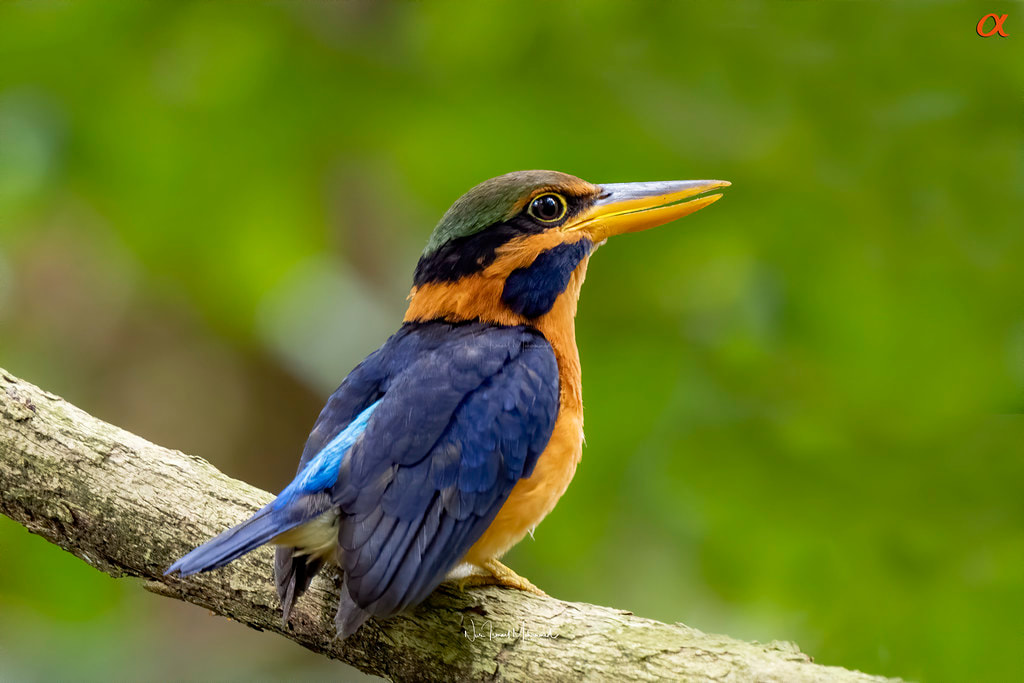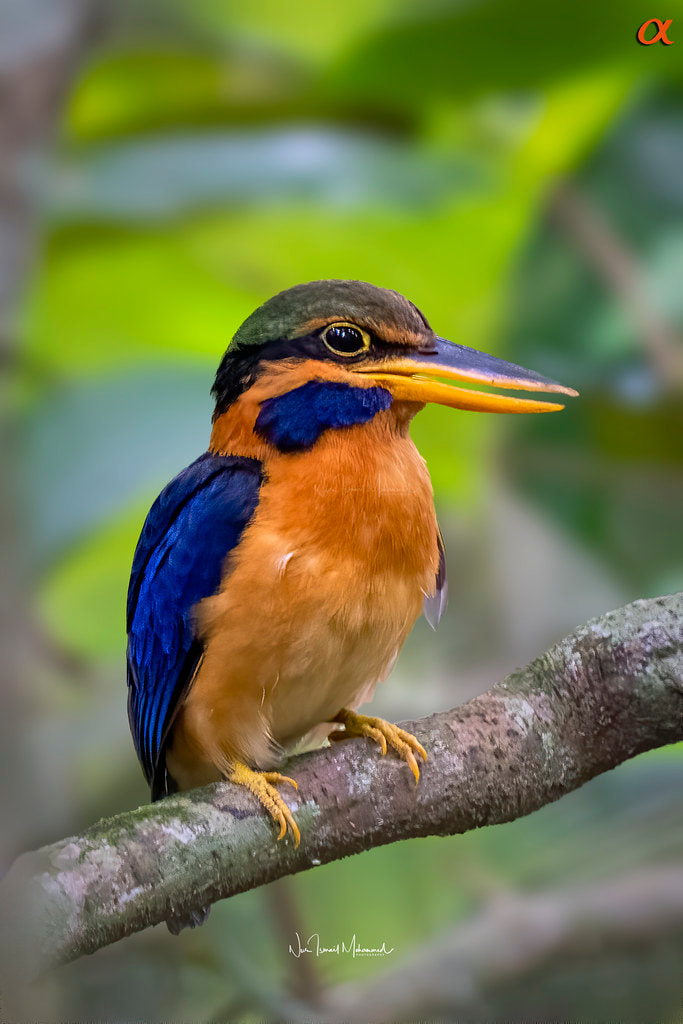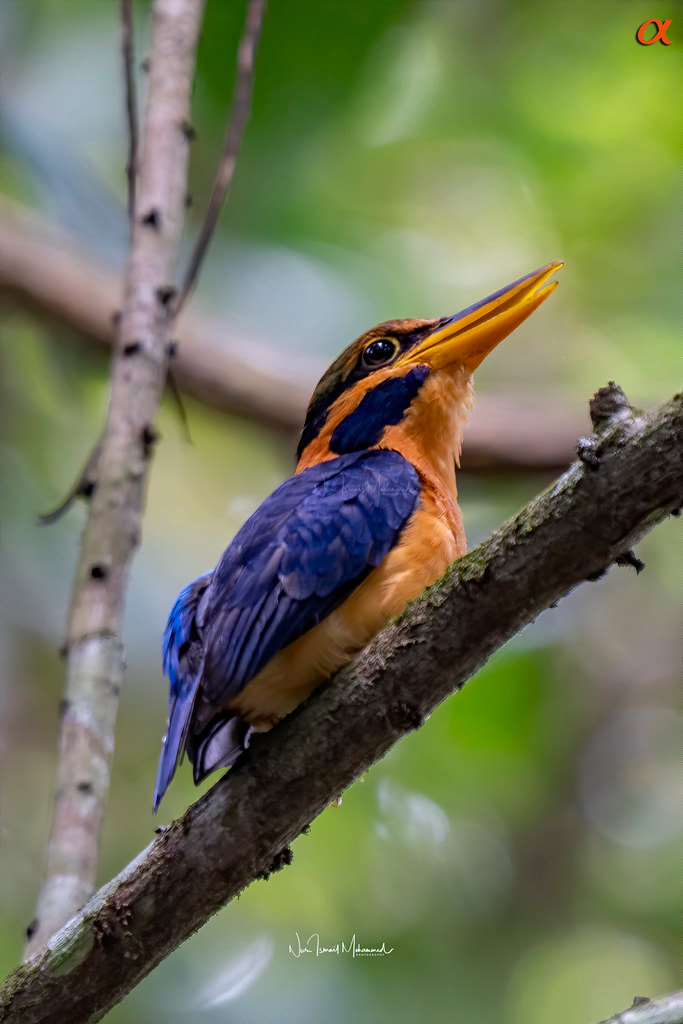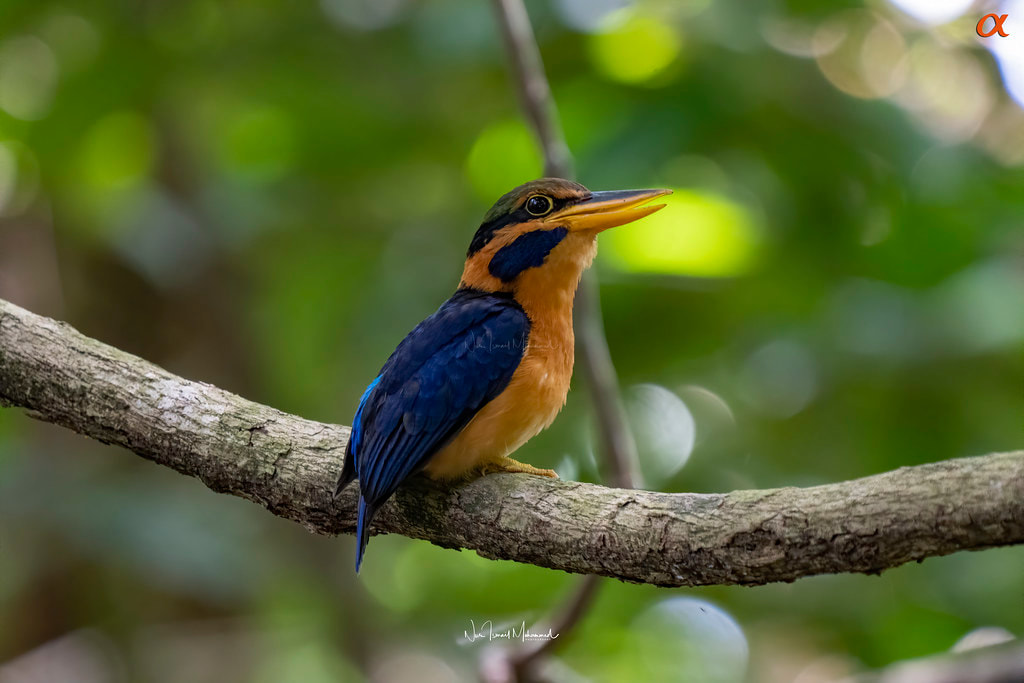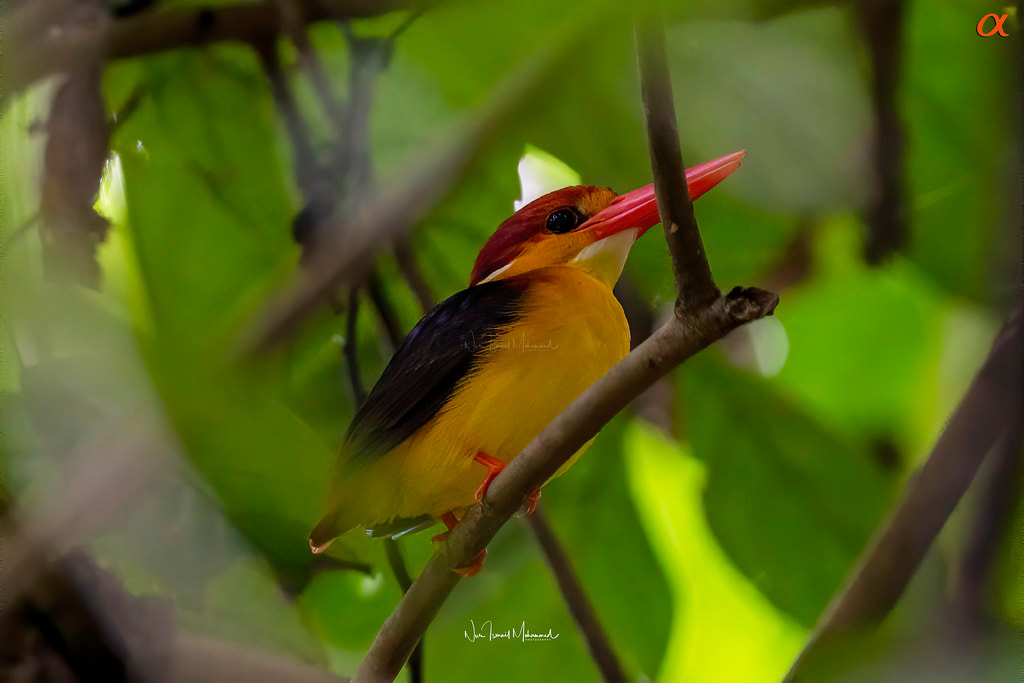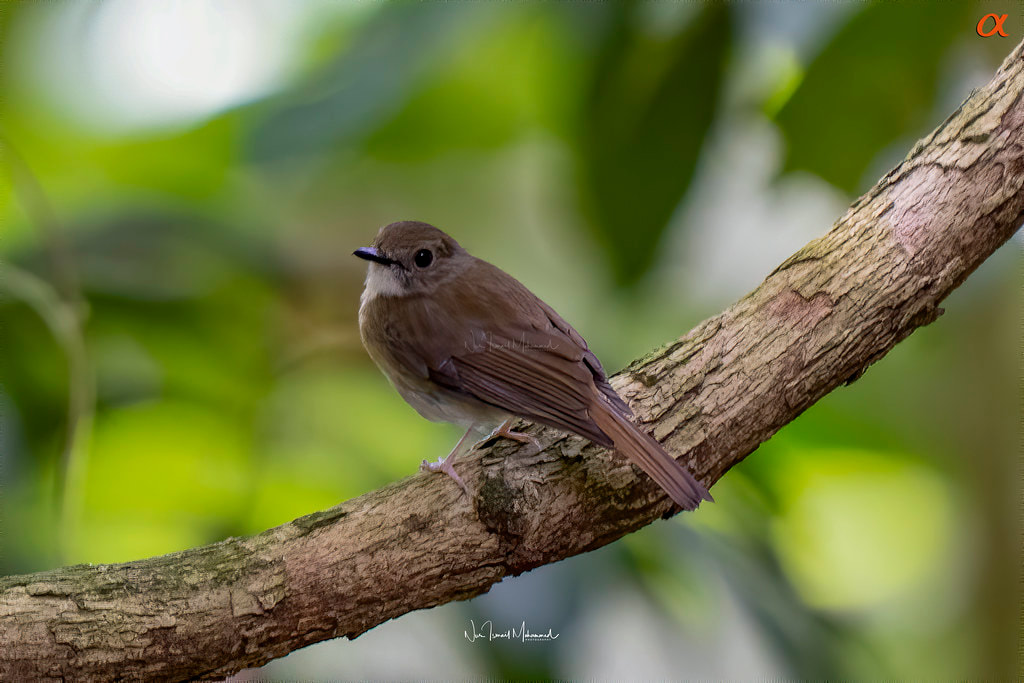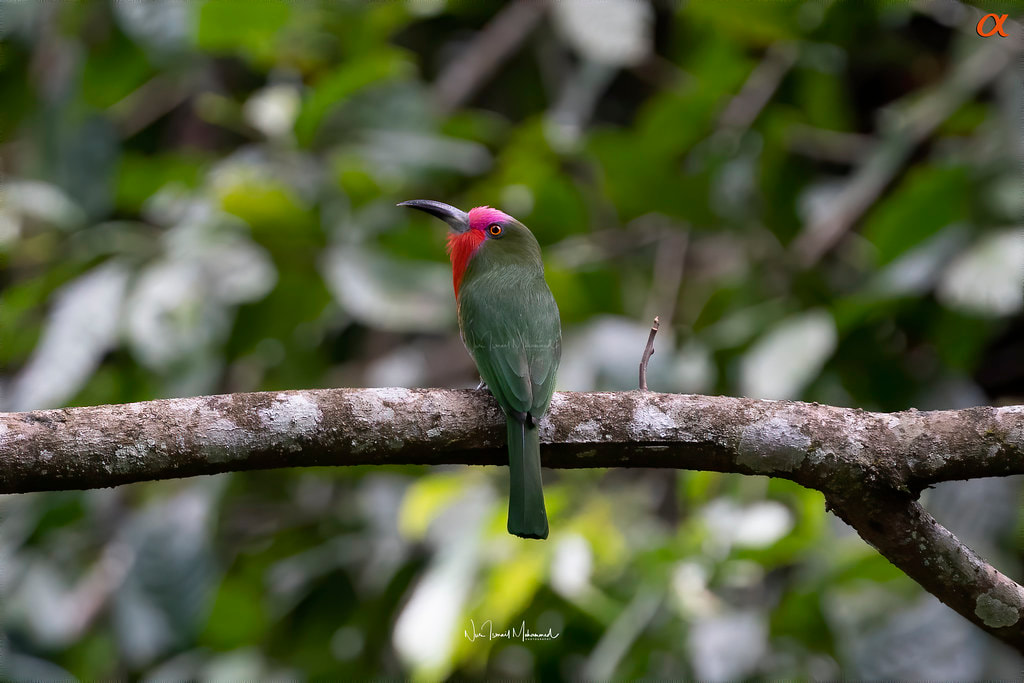|
We took a trip to Poring Hot Spring in Ranau, Sabah on 15 March 2020. The trip was guided by Khairulikhwan Matnin, the leading bird guide in Sabah. We started the journey early and arrived at Poring around 9:00am. We spend the whole morning until noon where we break for lunch. Among the birds photographed at Poring Hot Spring were Rufous-collared kingfisher, Oriental-dwarf kingfisher, Little cuckoo dove, Fulvous-chested jungle-flycatcher and Red-bearded bee-eater. Actenoides concretus is commonly known as the rufous-collared kingfisher. The adult has medium size with a proportioned head. The rufous-collared kingfisher has a shaggy crest, large and thick bill, blue head and back, and white throat and collar. It's underbody is white and has blue band across its chest. Both male and female has a slight differences appearance, where the male does not have the rufous band across its white abdomen, but present in its flanks. An addition for the female, some feather tips along the blue breast are rufous. Their diet includes fishes, insects, scorpions and small snakes. The rufous-collared kingfisher is confined to the Sundaic lowlands, which include Malaysia, Myanmar, Indonesia, Thailand and Brunei Darussalam (Jeyarajasingam & Pearson, 2012). It was regionally extinct in Singapore. Its habitat constitutes the closed canopy forest and regenerating logged forest. Due to forest loss, forest fires and land conversion, this species is listed as Near Threatened in the IUCN Red List (BirdLife International, 2016). [Source: MyBIS]. Name: Rufous-collared kingfisher Scientific: Actenoides concretus Malay: Pekaka Rimba Besar / Pekaka Tengkuk Perang Family: Alcedinidae IUCN Red List (v3.1, 2016): Near Threatened Gear: SONY a7RIV + SEL200600G. The Oriental dwarf kingfisher (Ceyx erithaca), also known as Black-backed kingfisher or pekaka rimba in Malay is the smallest kingfisher belonging to the Alcedinidae family. Its size can be measured about 14 cm in length (Strange & Jeyarajasingam, 1993). It prefers habitat, where it was usually found, includes areas such as small streams in densely shaded, lowland forests. Like other kingfishers, the oriental dwarf kingfisher has bright colours, with a large and strong bill. It is easily recognised by the deep yellow colours on its lores and face, bright blue crown with violet on the sides of its orange head, bluish-black with glossy blue lines upper plumage, orange-yellow under plumage and a white throat with bright orange coloured lines in the bottom. The bill and feet are orangey-red. Both males and females look alike while its juveniles' plumage is duller in colours. Instead of fish which is the typical diet of the kingfisher, this species mainly feeds on insects, as well as small lizards or frogs. Before eating, it kills them by holding them in the beak and continually hitting them against a stone or tree stump (Jeyarajasingam et al., 2016). [Source: Wikipedia]. Name: Oriental-dwarf kingfisher Scientific: Ceyx erithaca Malay: Pekaka Sepah Family: Alcedinidae IUCN Red List (V3.1, 2016): Least Concern Gear: SONY a7RIV + SEL200600G. The fulvous-chested jungle flycatcher (Cyornis olivaceus) is a species of bird in the Old World flycatcher family Muscicapidae. It is found in Brunei, Indonesia, Malaysia, Myanmar, and Thailand. Its natural habitat is subtropical or tropical moist lowland forests. This species was previously placed in the genus Rhinomyias but was moved to Cyornis based on the results of a 2010 molecular phylogenetic study. [Source: Wikipedia]. Name: Fulvous-chested jungle-flycatcher Scientific: Cyornis olivaceus Malay: N/A Family: Muscicapidae Gear: SONY a7RIV + SEL200600G. Nyctyornis amictus is a medium-sized but considerably large species in the bee-eater family. N. amictus is locally known as the red-bearded bee-eater based on its massive build and red “beard”. The male has a lilac forehead, bright green plumage, throat and crimson shaggy breast. The female is almost like the male but differ by its red forehead. Both sexes have two common characters, in which both have a pale orange yellow underside of the tail, broad blackish terminal band and the entire head and underparts of the juvenile is mostly green. The population for this bee-eater occurs in southern Thailand, Myanmar, Malaysia and Brunei. In Malaysia, it is a locally common resident that can be found at low elevations up to 1,300m. Commonly, the red-bearded bee-eater hawks insect at the forest edges. [Source: MyBIS]. Name: Red-bearded bee-eater Scientific: Nyctyornis amictus Malay: Berek-berek Janggut Merah / Beberek Tunggal Family: Meropidae IUCN Red List (v.3.1, 2016): Least concern Gear: SONY a7RIV + SEL200600G. #FullFrameLife #MySONYLife #sony #sonymalaysia #AlphaGuru #AlphaUniverseMY #alpha #a7RIV #SEL200600G #NurIsmailPhotography #madebyluminar #skylum #skylummalaysia #luminar #topazlabs #drgambar
Copyright © 2020 Nur Ismail Photography. All rights reserved. Do not use or reproduce these images on websites, blogs or publications without expressed written permission from the photographer.
0 Comments
Your comment will be posted after it is approved.
Leave a Reply. |
AuthorThis is the photography journey of Nur Ismail Photography where all the experiences from this year onwards will be shared with the audience. In collaboration with NiSi Malaysia, Leofoto, SONY Malaysia and Skylum Software. Thanks for viewing! Archives
August 2022
Categories |
